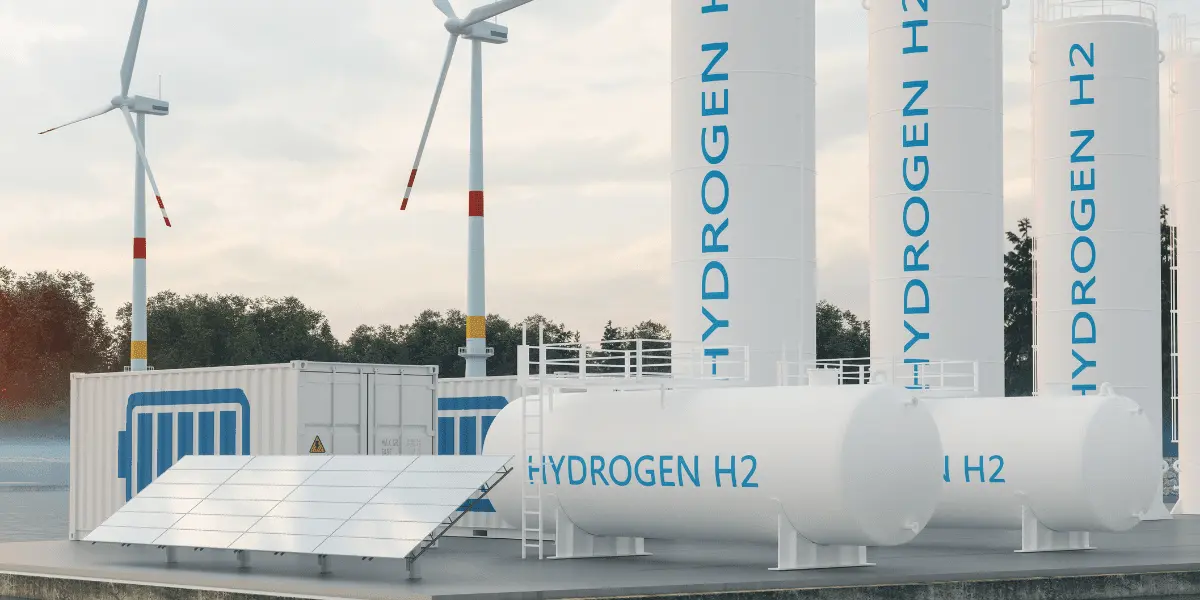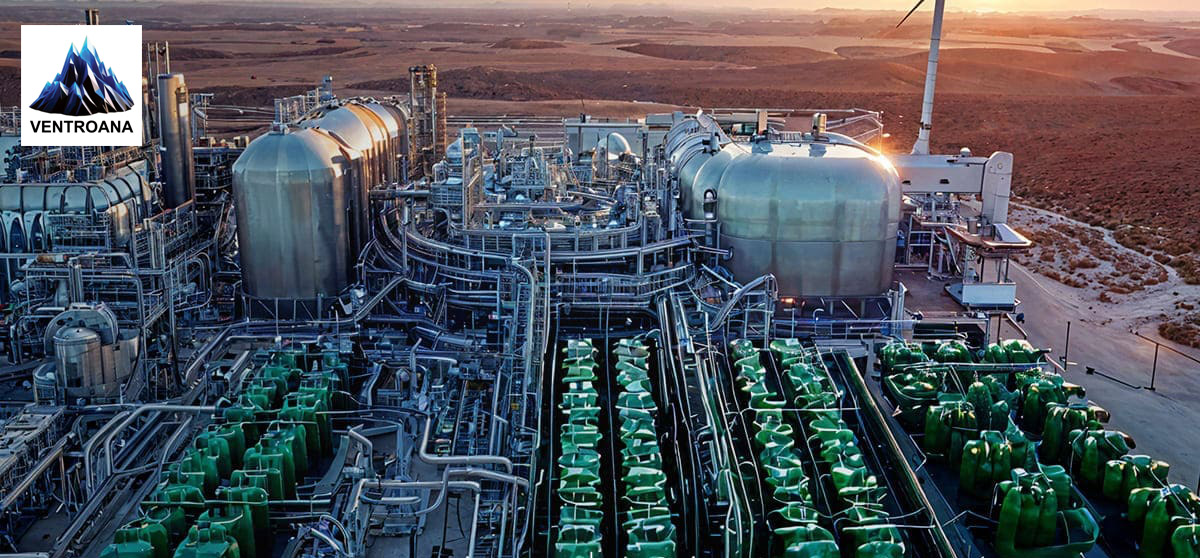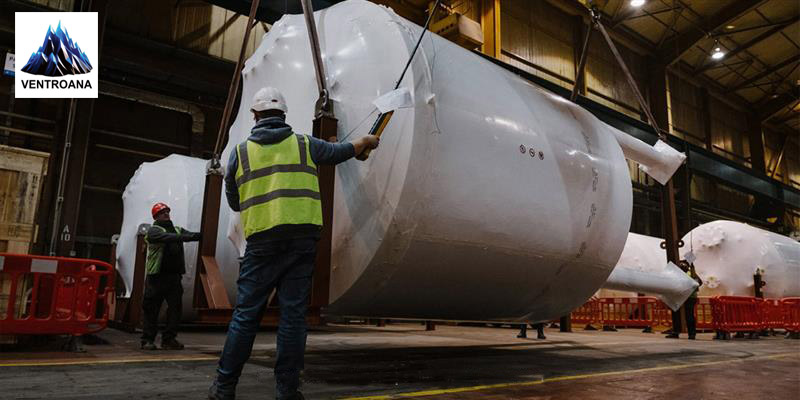Renewables
May 08, 2024

In the quest for a sustainable and decarbonized energy system, green hydrogen is emerging as a key player. The energy transition is a crucial global challenge, and reducing greenhouse gas emissions is a significant part of the solution. Amid fossil fuel phase-out, green hydrogen emerges as crucial for a decarbonized future.
There is a growing interest in green hydrogen as a key investment for the energy transition. It addresses the challenges of other renewables like intermittency and storage. Storing and transporting it makes green hydrogen a reliable and flexible energy source.
Renewable hydrogen, also called green hydrogen, forms through electrolysis, where electricity from sources like solar or wind splits water into hydrogen and oxygen.
Green hydrogen, unlike fossil fuel-dependent methods, emits only water vapor, providing a clean, sustainable alternative. Compressing and storing the produced hydrogen then enables its use in various applications.
Renewable energy sources such as wind and solar power are variable. It means that their output can fluctuate depending on weather conditions. This variability can cause challenges for grid stability and reliability.
However, it helps balance the grid by storing excess renewable energy when abundant and releasing it when needed. Hydrogen can be stored for long periods, making it an excellent solution for energy storage.
The utilization of fossil fuels plays a major role in generating greenhouse gas emissions. It offers an alternative to fossil fuels that can reduce dependence on them. As an alternative to fossil fuels, green hydrogen can play a critical role in enabling the transition to a decarbonized future.
Green hydrogen can help meet climate targets by reducing greenhouse gas emissions. It can replace fossil fuels in various sectors, reducing emissions in those sectors. It can also help balance the grid. It enables the increased deployment of renewable energy sources.
The cost of producing green hydrogen is declining as technology matures and demand grows. The International Energy Agency predicts its cost will fall by up to 80% by 2030. This cost reduction will make it more competitive. It will make it an increasingly attractive investment for a decarbonized future.
Experts forecast the green hydrogen market to surge to USD 10.55 billion by 2030 with a remarkable compound annual growth rate (CAGR) of 57.41% from 2024 to 2030. Increasing demand for renewable energy sources and the imperative to curb carbon emissions primarily drive this growth.
The Green hydrogen market industry is projected to increase from USD 0.44 billion in 2022 to USD 10.55 billion by 2030.
Achieving this milestone is a prerequisite for the future of the planet and the stability of the global economy. Net Zero by 2050: A Roadmap for the Global Energy Sector, A global scenario report, which was published in 2021 by IEA, sets an achievable pathway for the global energy sector to reach net zero emissions by 2050.
Hydrogen fuel cell vehicles (FCVs) use it as fuel, converting hydrogen into electricity to power electric motors.FCVs offer zero-emission transportation with longer ranges and shorter refueling times compared to battery electric vehicles.
It serves as a clean energy source for industrial processes. By replacing fossil fuels in these processes, green hydrogen helps reduce greenhouse gas emissions and mitigate climate change.
Using it in fuel cells generates electricity, providing a reliable and dispatchable source of renewable energy. This application balances solar and wind power intermittency, boosting grid stability and reliability.
Storing and using it as a form of energy storage helps address the challenge of intermittency inherent in renewable energy sources. Hydrogen storage systems store surplus renewable energy for grid stability and maximize renewable energy integration.
To unlock the vast potential of green hydrogen, we must address several challenges while realizing its widespread adoption.
The high cost of electrolyzers and renewable energy sources poses a significant barrier to the commercialization of green hydrogen. Declining renewable energy costs and improved electrolyzer efficiency reduce green hydrogen production expenses.
The development of infrastructure for green hydrogen production, storage, transportation, and distribution is crucial for its commercial viability. A robust hydrogen infrastructure network, including hydrogen refueling stations, pipeline systems, and storage facilities, needs public and private investments to be built.
Growing awareness of green hydrogen's environmental benefits, along with regulations and corporate sustainability goals, drives demand for renewable energy solutions. Companies in diverse sectors explore integrating it, fostering new revenue streams, and bolstering environmental credentials.
Green hydrogen holds immense potential as a renewable energy source. Through technological innovation, cost reduction, infrastructure development, and the technical barriers to its adoption can be overcome. It can pave the way for a sustainable energy future.
Green hydrogen can decarbonize various economic sectors and mitigate climate change impacts. By harnessing the power of green hydrogen, we can create a cleaner, and more sustainable world for future generations.
Green hydrogen can play a significant role in the transition to a low-carbon economy and achieving net-zero emissions. In the global pursuit of combating climate change and achieving net zero emissions, the spotlight is increasingly turning towards innovative solutions. Among these, green hydrogen stands out as a promising renewable energy source.
Contact Ventro Analytics as a trusted partner, you can harness the potential of Green Hydrogen to forge a more sustainable future. To avail of our services, you can send us an email at sales@ventroana.com.
Tags: Green Hydrogen Renewable Energy Hydrogen Economy Clean Energy Sustainability Alternative Energy Hydrogen Technology

Successful Implementation of Green Hydrogen in Power Plants
Discover how green hydrogen revolutionizes power plants with sustainable energy solutions, reducing ...

Driving Innovation and Resilience: Insights from the 10th Annual Energy Supply C...
Gain insights on driving innovation and resilience at the 10th Energy Supply Chain & Procurement Sum...

Understanding EPC Engineering: Key Concepts Explained
Discover the essentials of EPC Engineering, covering contracts, project phases, and roles of EPC con...